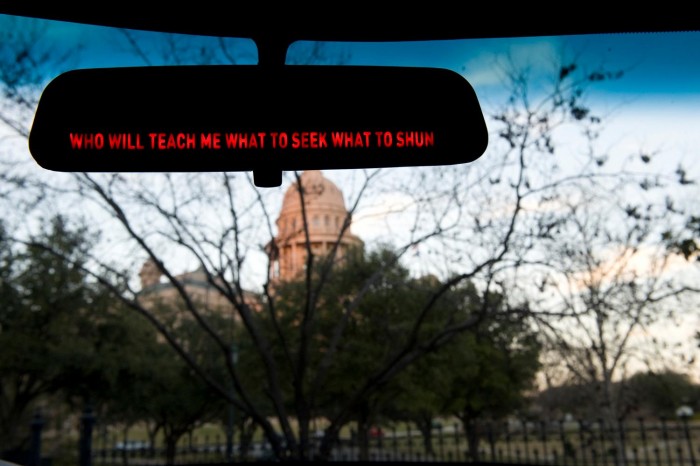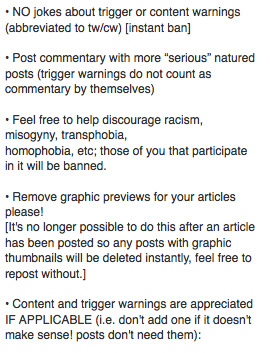The act of confessing has a history as long as the notion of secrets. Their histories wrap both societal and interpersonal dynamics, their forms changing as new revelations appear and values change. In this age of self-publishing on online social networks, confessing becomes as easy as rapidly typing and pressing post or send. Parthenia (1995), an adaweb project by Margot Lovejoy, was an online confessional for victims of domestic abuse. Although the concept of the Internet confessional was nothing new, this “monument” utilized and formalized the network to be presented as an instrument of change, a cyberfeminist public space to express without judgement that could heal and empower those voices that were not heard before.

Margot Lovejoy, Parthenia (1995)
The promise of any new medium is that it will offer new possibilities for those that were previously disenfranchised or marginalized. However, there is a lot of research that shows that even the Internet, as disseminate and accessible as it is, just reinforces and codifies old patterns. Parthenia emphasizes this as it re-enacts domestic abuse support groups but then changes its relationship to the audience – rather than confessing to a specific group, confession occurs at a public level, amplifying its awareness and cathartic value. As a safe space, many of these responses are anonymous; even when a name is assigned there is no profile or identity associated to it. This artwork foretold many confessional websites of that Internet era such as PostSecret or Group Hug. These are ways we found to not be alone when in front of our computer terminal.

A post on PostSecret
Although confessing often benefits the confessor as a way to relieve feelings of guilt or anxiety, the confessee often benefits as such statements serve to create social bonds, enable similar relief or to extract reciprocal information. These projects illustrate the magnification of broadcast that the Internet has and that social movements can indeed be brought forward when the network itself is addressed. The network-as-confessee could reach an anonymous audience larger than those reading scribbles on bathroom walls.
However, in this post-Snowden era, when we confess on these platforms, we not only confess to our communities but know that we are also subjugated to governmental and corporate surveillance. There are real names or IP addresses tied to our confessions. It is not surprising that anonymous apps such as Secret did not last long as our confessions, intrinsically linked to our identities, have to be revealed in order to be monetized as digital labor. In the case of Whisper, another anonymous confessional app, they have trivialized their content and transformed them into memes and listicles, losing the intimate aspect of telling a secret. Not only the network, but the individual has changed as well: we curate our social media identities, some even to the point of imposter, utilizing the cape of code to send off false confessions in pursuit of gain. How can we trust anything or anyone online?
A solution to this is going back to the basics: tribalism. Postmodernity has shifted identity from a fixed entity to one that is continually in process, evolving our ideas of shared interests and activities from simple tags (Tame Impala, art, Catholicism) to a more holistic approach. In a recent lecture by K-Hole, they said: “Once upon a time people were born into communities and had to find their individuality. Today people are born individuals and have to find their communities.” We are now individual individuals seeking like minded people. Instead of being born in a tribe, we now seek out and eventually find our tribe within a globalized public. From this tribalism, we can seek out mutual support and understanding, a safe space where we can enact confession, both given and received.
“Dunbar’s number” is the theoretical limitation of the number of people that one can sustain social relations with. Robin Dunbar came up with the number 150, but this number is actually a starting point, following a “rule of three”: five is the limit for your intimate friends, 50 for your close friends, 150 for your casual friends, and 500 as your acquaintances. In Dorthy Howard’s recent Rhizome essay, “Feed my Feed: Radical publishing in Facebook Groups,” she argues that Facebook groups can produce “some exciting new ground as the smaller, granular levels of conversation become fodder for the public sphere.” These conversations can range from selfies to similar aesthetics to cybertwee to memes. Although she recognizes the irony in utilizing Facebook as a way of generating intimacy, Facebook has become our contemporary public. Private groups, with the recognition of Dunbar’s number, can entice a new tribalism in response to an ever-increasing unsafe and sousveilled environment, both online and off.





















